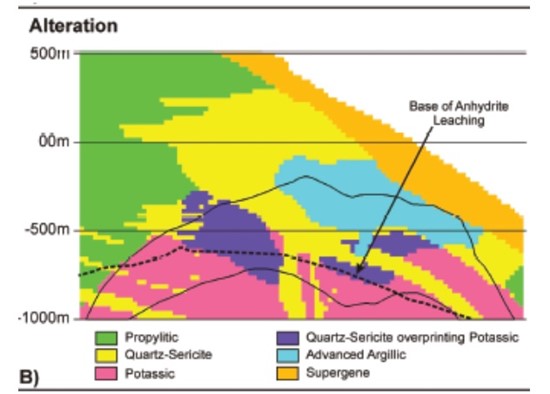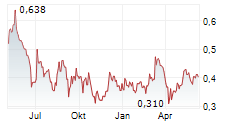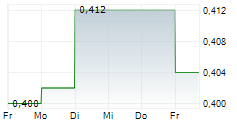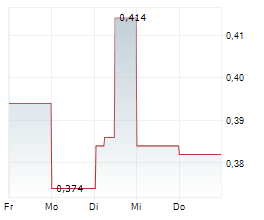Toronto, Ontario--(Newsfile Corp. - May 5, 2025) - Hercules Metals Corp. (TSXV: BIG) (OTCQB: BADEF) (FSE: C0X) ("Hercules" or the "Company") is pleased to announce the results of an independent study, focused on the high-grade enrichment zone at the Company's Hercules Property in western Idaho ("Hercules" or the "Property"). The study, authored by independent consultant Jamie Wilkinson1 (the "Wilkinson Report"), presents evidence that Leviathan's shallow enrichment zone formed through a hypogene process known as "telescoping", in which epithermal fluids overprinted and upgraded earlier porphyry mineralization. Unlike supergene enrichment, which is limited to narrow blankets of near-surface weathering, telescoping implies significantly greater scale and grade potential. The upcoming drill campaign will therefore focus on targeting the shallower levels of the system, where the porphyry and epithermal systems are believed to overlap.
Highlights
- Telescoping of hypogene enrichment, occurs when a porphyry system is rapidly uplifted into a shallower high-sulfidation epithermal environment.
- Microscopic examination of Leviathan's enrichment zone reveals an assemblage of bornite-chalcocite-digenite-covellite-pyrite, with strong quartz-muscovite and trace advanced argillic alteration, consistent with a high-sulfidation epithermal upgrade (hypogene enrichment).
- Vectoring towards thicker zones of hypogene enrichment requires a clear understanding of the structural evolution. While rapid uplift can enhance enrichment, it also heightens the risk of erosion. Preservation is highest where enrichment zones become quickly down-dropped and buried after their formation.
- The Leviathan district was tilted and potentially down-dropped to the north-northwest, suggesting potential for enhanced preservation under cover in that direction.
- The 2025 drill campaign is designed to test the newly developed geological model (outlined in a recent press release) which highlights potential for southeast dipping feeder structures, along which the enrichment may root far deeper than previously appreciated.
- Despite being truncated by a supergene leach cap, no significant supergene enrichment is apparent.
- Intense phyllic alteration and near-complete feldspar destruction, supressed formation of a supergene enrichment blanket beneath the leach cap. However, the presence of native copper in the leach cap of two adjacent drill holes offers a compelling vector for a potential exotic copper deposit.
Chris Paul, CEO and Director of the Company, commented, "Jamie's report provides us with important insight into the origin and preservation of high-grade hypogene enrichment, significantly influencing our exploration strategy moving forward. Combined with input from the new 3D geological model, and the acquisition of a strategic mineral lease in areas of enhanced preservation potential, we're now able to start directly testing for zones of thicker hypogene enrichment."
Addressing the Origin of the Enrichment Zone
The Wilkinson Report was aimed at addressing whether the high-grade enrichment at Leviathan was the product of weathering (supergene) or a hydrothermal overprint (hypogene). The planar upper contact of the enrichment zone led to some speculation that it was a supergene enrichment blanket, created by erosion and leaching from above. However, new insight provided by the Wilkinson Report demonstrates strong evidence that the unconformity and leach cap crosscut, but do not upgrade, a pre-existing hypogene enrichment zone.
Although not conclusively identified, negligible volumes of potential supergene copper may occur within the high-sulfidation enrichment zone. However, the potential contribution of any unidentified supergene copper within the enrichment zone would be trivial, if anything.
The leach capping above, however, does contain supergene native copper in two drill holes, which may instead point to the potential for a distal exotic copper deposit.
Rethinking Scale
New 3D geological and structural modeling highlights a pronounced southeast dip to the system, encompassing the hypogene enrichment zone. Earlier drilling was based on a shallow, gently dipping blanket model; however, the enrichment is now interpreted to extend significantly deeper along southeast-dipping feeder structures. The upcoming northwest-oriented fence drilling campaign is specifically designed to test this revised model and evaluate the true vertical extent of enrichment along these newly defined structural controls.
Preservation Windows and Untested Potential
Approximately 1.6 km of Leviathan's 4-km-long chargeability anomaly has been tested by drilling, within which, the enrichment zone has undergone leaching and erosion. However, new mapping and oriented core drilling has lead to a geological and structural model that highlights areas with greater preservation potential including:
- Broad areas to the north and northwest, where tilting and rotation may have preserved progressively shallower Triassic geology under post-mineral cover.
- Northwest of the BNA Fault, where the Western Deeps chargeability anomaly is interpreted to be down-dropped by several hundred meters. Depending how quickly the Western Deeps was down-dropped, buried and preserved, there may be much thicker zones of enrichment preserved. The Resolution Copper project in Arizona2, represents an analogue to this structural/deposit model.
Resolution as a Potential Analogue
Figures 1 and 2 present northwest facing cross-sections of the geology and alteration at Resolution, from Hehnke et al. The Resolution porphyry system is interpreted to have undergone rapid uplift during formation, which resulted in substantial telescoping of its alteration and mineralization, including a late-stage high-sulfidation enrichment overprint, represented by the blue zone of "advanced argillic" alteration on Figure 2.
As uplift continued, the shallow part of the system, above the 1% Cu shell, was eroded, and imposed a leach cap, represented by the orange "supergene" alteration zone on Figure 2. However, prior to erosion of the 1% Cu shell, local tectonics reversed course quickly and down-dropped the deposit into a structural graben, burying it with over 1km of "Whitetail Conglomerate" and other post-mineral cover rocks (Figure 1). Although the deposit is now situated beneath 1.5 km of post-mineral cover, that rapid down-drop and burial is ultimately what preserved the high-grade part of the system from erosion. Post-mineral tilting has also since rotated the deposit approximately 25 degrees to the northeast as indicated by the basal contact of the Whitetail Conglomerate.
Another interesting analogue of note is that Resolution lacks any significant supergene enrichment.

Figure 1: Geological section through the Resolution copper deposit looking northwest3.
To view an enhanced version of this graphic, please visit:
https://images.newsfilecorp.com/files/9425/250764_herculesfigure1.jpg

Figure 2: Alteration section through the Resolution copper deposit looking northwest.
To view an enhanced version of this graphic, please visit:
https://images.newsfilecorp.com/files/9425/250764_herculesfigure2.jpg

Figure 3: Figure extracted from the Wilkinson Report comparing automated SEM scans of intense quartz-muscovite alteration with disseminated bornite-chalcopyrite in the enrichment zone at Leviathan to a similar style of alteration and mineralization at the Resolution copper project in Arizona2.
To view an enhanced version of this graphic, please visit:
https://images.newsfilecorp.com/files/9425/250764_2ad297b924695ad6_004full.jpg

Figure 4: District scale map, with dark shading over areas of post-mineral cover, indicating broad areas of increasing enrichment potential to the north and northwest.
To view an enhanced version of this graphic, please visit:
https://images.newsfilecorp.com/files/9425/250764_2ad297b924695ad6_005full.jpg
Potential for Exotic Copper
The 1.6 km portion of the enrichment zone which has been tested so far at Leviathan shows effects of supergene leaching, without any immediate evidence for supergene enrichment below. The likely reason for this is destruction of the host rocks acid buffering capacity by the telescoped alteration. The Wilkinson report notes that extreme phyllic alteration at Leviathan resulted in near complete destruction of feldspars, which are a typical "trap" needed to re-precipitate copper in a supergene blanket. However, the absence of supergene copper in an underlying blanket, signals potential for the alternative method of supergene enrichment - a distal "exotic copper deposit" - which may occur at greater distances if a suitable chemical trap was encountered.
Highly acidic groundwater is interpreted to have transported copper, weathered and leached from the enrichment zone, downslope along a paleo groundwater flow path. It is yet to be determined which direction was downslope in a paleo-topographical setting, however modelling of the unconformity in 3D continues to reveal insights to the ~200-million-year (Ma) paleo-topography.
Tentatively, downslope is inferred to be the same direction as tilting, to the north-northwest. Possible evidence for this occurs in two drill holes, 24-08 and 24-11, situated to the north-northwest, each of which encountered supergene native copper in the leach cap. The metallic copper occurs along late carbonate veins that appear to have provided a suitable chemical trap to react with the acidic groundwater and re-precipitate the copper leached by weathering from the enrichment zone nearby. These may represent points along a potential paleo groundwater flow path, from leach cap to distal exotic copper deposit, if a larger chemical trap, such as an entire host rock composed of carbonate, rather than just small veins of it, was encountered along the groundwater flow path.

Figure 5: Supergene native copper in drill holes 24-08 and 24-12. Note the association with late carbonate veins (white), which appear to be near-completely replaced by metallic copper. Core is 3.3" diameter PQ.
To view an enhanced version of this graphic, please visit:
https://images.newsfilecorp.com/files/9425/250764_herculesfigure5.jpg
Evidence for Hypogene Enrichment
The following lists the important geological factors that support the conclusion of a hypogene origin to the bornite-chalcocite dominated enrichment zone at Leviathan. Many features were observed under either petrographic microscope or automated SEM.
- Thin sections show bornite intergrown with pyrite - a hallmark of high-sulfidation mineralization. Minor covellite, a typical high-sulfidation copper mineral, occurs as well.
- Bornite contributes the majority of grade to the enrichment zone and significant quantities are only known to form in high temperature conditions. No significant resources of supergene bornite are known to exist globally. Under supergene conditions, bornite is only hypothetically stable in a very small theoretical stability field, illustrated by the red field in Figure 6, extracted from the Wilkinson Report.

Figure 6: Eh-pH Phase diagram extracted from the Wilkinson Report, showing the very small theoretical stability field of bornite in supergene conditions (red), within a larger stability field of chalcocite under similar conditions.
To view an enhanced version of this graphic, please visit:
https://images.newsfilecorp.com/files/9425/250764_2ad297b924695ad6_008full.jpg
- Under the microscope, bornite shows complex intergrowth with chalcocite, often as exsolution lamellae, which form during cooling through high temperatures.
- Chalcocite coatings over chalcopyrite and pyrite - a hallmark of supergene enrichment - are not observed at Leviathan.
- Chalcocite often occurs in veins at Leviathan, exhibiting a steel gray metallic lustre, characteristic of its hypogene habit. Supergene chalcocite, on the other hand, is a sooty black colour, with an earthy lustre, which remains to be seen at Leviathan.
- SWIR analysis of drill core shows a strong correlation of hydrothermal muscovite within the enrichment zone, indicative of hypogene alteration.
- Advanced argillic alteration, characteristic of high sulfidation epithermal systems, is identified both visually and by SWIR spectroscopy, albeit in relatively minor amounts. Pyrophyllite, a common advanced argillic mineral, is identified by SWIR in a number of drill holes. It occurs in narrow zones, consistent with potential telescoping along southeast dipping feeder structures. The Wilkinson Report tentatively identifies another possible advanced argillic mineral, dumortierite, in a number of samples. Although convincing, its definitive identification requires XRD confirmation.
- The enrichment shows evidence of a hydrothermal zoning pattern. Mineralization transitions upward from a deep pyrite-chalcopyrite (intermediate sulfidation) assemblage, into a chalcopyrite dominant assemblage, and finally into a high-sulfidation bornite-chalcocite-covellite-digenite-pyrite assemblage at the shallowest depths. With the exception of drill hole 24-12, copper grades increase upward until truncating sharply at the leach cap, consistent with partial erosion and leaching of a hypogene enrichment zone, but inconsistent with a typical supergene enrichment profile.
- Typical supergene enrichment zonation consists of a leach cap separated from an enrichment blanket by a transitional zone dominated by copper oxides/carbonates/sulfates (i.e. malachite, etc.) - a feature that has not been observed in drilling at Leviathan.
- A lack of significant pyrite, or weathering products of pyrite, within both the leach cap and enrichment zone, suggest an overall low acid generating capacity, which is typically required to generate significant supergene enrichment.
Qualified Person
The scientific and technical information in this news release has been reviewed and approved for disclosure by Dillon Hume, P.Geo. and Vice President, Exploration for the Company. Mr. Hume is a "Qualified Person" for Hercules Metals within the meaning of National Instrument 43-101 - Standards of Disclosure for Mineral Projects.
About Hercules Metals Corp.
Hercules Metals Corp. (TSXV: BIG) (OTCQB: BADEF) (FSE: C0X) is an exploration Company focused on developing Idaho's newest copper and silver district.
The 100% owned Hercules Project located northwest of Cambridge, hosts the newly discovered Leviathan porphyry copper system, one of the most important discoveries in the region to date. The Company is well positioned for growth through continued drilling, supported by extensive historical and current exploration and a strategic investment by Barrick Gold.
With the potential for significant scale, the Company's management and board of directors aims to build on its proven track record which includes the discovery and development of numerous precious metals projects worldwide.
For further information please contact:
Nisha Hasan
Investor Relations
Telephone: +1 (604) 425-1408
Email: nisha@herculesmetals.com
Chris Paul
CEO & Director
Telephone: +1 (604) 670-5527
Email: chris@herculesmetals.com
Dillon Hume
VP, Exploration
Telephone: +1 (604) 283-2043
Email: dhume@herculesmetals.com
This news release does not constitute an offer to sell or a solicitation of an offer to buy any of the securities in the United States. Any securities referred to herein have not and will not be registered under the United States Securities Act of 1933, as amended (the "U.S. Securities Act") or any state securities laws and may not be offered or sold within the United States or to U.S. Persons unless registered under the U.S. Securities Act and applicable state securities laws of an exemption from such registration is available.
Disclaimer for Forward-Looking Information
This news release contains certain information that may be deemed "forward-looking information" with respect to the Company within the meaning of applicable securities laws. Such forward-looking information involves known and unknown risks, uncertainties and other factors that may cause the Company's actual results, performance or achievements, or developments in the industry to differ materially from the anticipated results, performance or achievements expressed or implied by such forward-looking information. Forward-looking information includes statements that are not historical facts and are generally, but not always, identified by the words "expects," "plans," "anticipates," "believes," "intends," "estimates," "projects," "potential" and similar expressions, or that events or conditions "will," "would," "may," "could" or "should" occur. Forward-looking information contained in this press release may include, without limitation, the expected execution of future exploration programs on the Property; assay results of future drill holes; results of operations, and the expected financial performance of the Company.
Although the Company believes the forward-looking information contained in this news release is reasonable based on information available on the date hereof, by its nature, forward-looking information involves assumptions and known and unknown risks, uncertainties and other factors which may cause our actual results, level of activity, performance or achievements, or other future events, to be materially different from any future results, performance or achievements expressed or implied by such forward-looking information.
Examples of such assumptions, risks and uncertainties include, without limitation, assumptions, risks and uncertainties associated with general economic conditions; the Covid-19 pandemic; adverse industry events; the receipt of required regulatory approvals and the timing of such approvals; that the Company maintains good relationships with the communities in which it operates or proposes to operate, future legislative and regulatory developments in the mining sector; the Company's ability to access sufficient capital from internal and external sources, and/or inability to access sufficient capital on favorable terms; mining industry and markets in Canada and generally; the ability of the Company to implement its business strategies; competition; the risk that any of the assumptions prove not to be valid or reliable, which could result in delays, or cessation in planned work, risks associated with the interpretation of data, the geology, grade and continuity of mineral deposits, the possibility that results will not be consistent with the Company's expectations, as well as other assumptions risks and uncertainties applicable to mineral exploration and development activities and to the Company, including as set forth in the Company's public disclosure documents filed on the SEDAR+ website at www.sedarplus.ca.
THE FORWARD-LOOKING INFORMATION CONTAINED IN THIS PRESS RELEASE REPRESENTS THE EXPECTATIONS OF HERCULES METALS AS OF THE DATE OF THIS PRESS RELEASE AND, ACCORDINGLY, IS SUBJECT TO CHANGE AFTER SUCH DATE. READERS SHOULD NOT PLACE UNDUE IMPORTANCE ON FORWARD-LOOKING INFORMATION AND SHOULD NOT RELY UPON THIS INFORMATION AS OF ANY OTHER DATE. WHILE HERCULES METALS MAY ELECT TO, IT DOES NOT UNDERTAKE TO UPDATE THIS INFORMATION AT ANY PARTICULAR TIME EXCEPT AS REQUIRED IN ACCORDANCE WITH APPLICABLE LAWS.
Neither the TSX Venture Exchange nor its Regulation Services Provider (as that term is defined in the policies of the TSX Venture Exchange) accepts responsibility for the adequacy or accuracy of this press release.
1 Wilkinson, J. 2025. Final Report on the Hercules Project Based on Site Visit, Petrographic Observations, Geochemistry and SWIR Alteration Logs. By Jamie Wilkinson. JJW Geoconsultants Ltd.
2 This press release contains information about the Resolution Copper project in Arizona, owned by BHP (45%) and Rio Tinto (55%), which Hercules has no right to explore or mine. Readers are cautioned that mineral deposits at the Resolution Copper project are not indicative of mineral deposits on the Hercules Property. The geological comparison is for conceptual targeting only.
3 Hehnke, C., Ballantyne, G., Martin, H., Hart, W., Schwarz, A, and Stein, H. 2012. Geology and Exploration Progress at the Resolution Porphyry Cu-Mo Deposit, Arizona. Society of Economic Geologists, Inc. Special Publication 16, pp. 147-166

To view the source version of this press release, please visit https://www.newsfilecorp.com/release/250764
SOURCE: Hercules Metals Corp.



